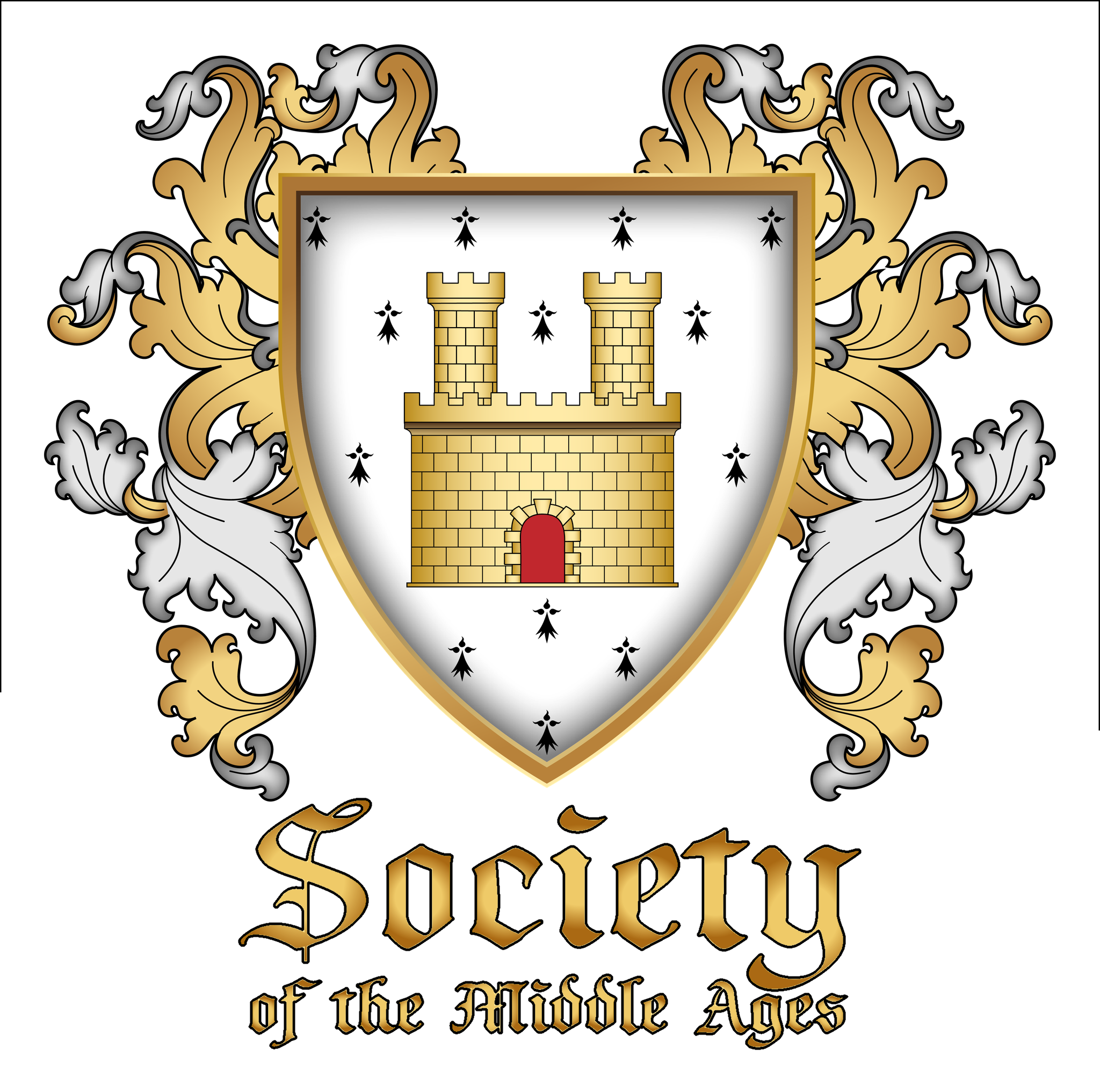Letter of Registrations and Returns
Society of the Middle Ages, Inc.
Office of the Muskatour King of Arms
February 2024
Greetings from the Muskatour staff.
It has been a while since our last LoRR. We had no submissions in December, so a January meeting was not warranted, and there were no “words of wisdom” to pass on that necessitated an additional letter. However, we had plenty of submissions in January to keep the staff busy after the holidays.
As usual, I will remind everyone that using a consulting herald to assist you with your submissions can help mitigate some of the more common issues: lack of documentation, lack of information on the forms, quality artwork, etc. Our College grew by a couple of new heralds over the last quarter, and we will be conducting online classes on heraldic style and the submissions process in the upcoming months. Always feel free to reach out to any herald individually or to the College as a whole through email or social media if you need assistance.
This month was marked by a plethora of heraldic titles. A reminder to all local officers – every branch, regardless of size, is entitled to register an heraldic title for their local Pursuivant. If you have any questions about acceptable conventions for such titles, please contact me at lion.dor@sma-alendia.org to learn more.
There were no contentious issues this month.
There are no new precedents from this month’s meeting.
This month we have one return and no new pends. See below for the details.
REGISTRATIONS
1. Andrew ap Madoc – New Name, New Arms
Vert, a saltire gules fimbriated argent, overall a Celtic cross Or
Submitted as Andreas ap Madoc, the Muskatour staff could not find Andreas documented as a Welsh given name. Additionally, we could not find it as an English given name (compatible with Welsh) prior to 1596 AD. Andreas is a Latinized form of Andrew in common usage in the eastern Roman empire and in limited use during our period of study in Germany and the Low Countries. Unfortunately, none of those language groups are compatible with a Welsh surname. Andrew is documentable in Wales within 300 years of the surname style. The client approved the change.
2. Phoenix Riding – New Castle Name
Riding dates to the late 13c., from late Old English þriðing, in turn from Old Norse ðriðjungr “third part,” from ðriði “third”. A riding was an administrative subdivision of a tax region (most notably, a third – thus the “third part” reference.) In late period, the term was sometimes used to refer to large estates in northern Great Britain taxed for their property value. Although not specifically defined as a synonym for castle, the relationship of the word to private estates was considered acceptable to the staff as a designator for a SMA castle in accordance with RfS III.A.1.a.
3. Dracanceaster, Borough of – New Heraldic Title
Dragon d’Or Pursuivant
4. Gryffyd ap Gruffudd – New Name, New Arms
Per saltire argent and vert, a saltire and a bordure Or
5. Stórvötn, Borough of – New Heraldic Title
Loup d’Argent Pursuivant
Submitted as Lupus d’Argent Pursuivant, the title mixed Latin with French. Period usage would have used either all Latin or all French. Both options were offered to the client, who approved the all-French form.
6. Norðurhöfn – New Castle Name (see Returns for Arms)
7. Ulric of Wodewic – New Name, New Arms
Per fess azure and gules, in pale a dragon’s head couped argent and two swords in saltire Or
8. Wodewic – New Badge
(Fieldless) A bear’s head erased Or
9. Wodewic – New Badge
(Fieldless) A boar’s head erased reversed gules
10. Isabel MacAoidh – New Name, New Arms
Purpure, a tree blasted and eradicated within a double tressure argent
Submitted as Ysabelle MacAoidh, the spelling of the given name could not be documented to a location and time period compatible with the surname. As the client was more interested in maintaining the Scottish surname, the given name was changed to Isabel with the client’s approval.
RETURNS
1. Norðurhöfn – New Castle Arms (see Registrations for Name)
Sable, a tree argent, on a chief sable embattled fimbriated, a compass star Or
This was returned for two reasons. The first reason is that use of the compass star (a mullet of four greater and four lesser points) is prohibited in SMA heraldry as a post-period construct. The second reason is that the chief, as a peripheral ordinary, cannot be fimbriated. Without the fimbriation, a sable chief on a sable field has insufficient contrast. Even if fimbriation of a peripheral ordinary were permitted, having the chief and field as the same tincture gives the fimbriation the appearance of “thin line” heraldry unrepresentative of period style.
PENDED
None
